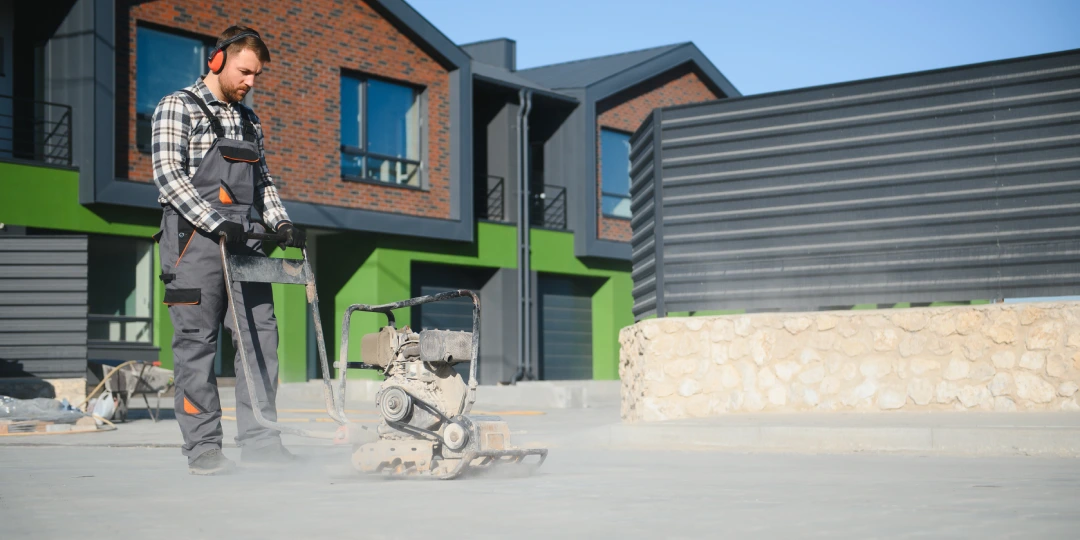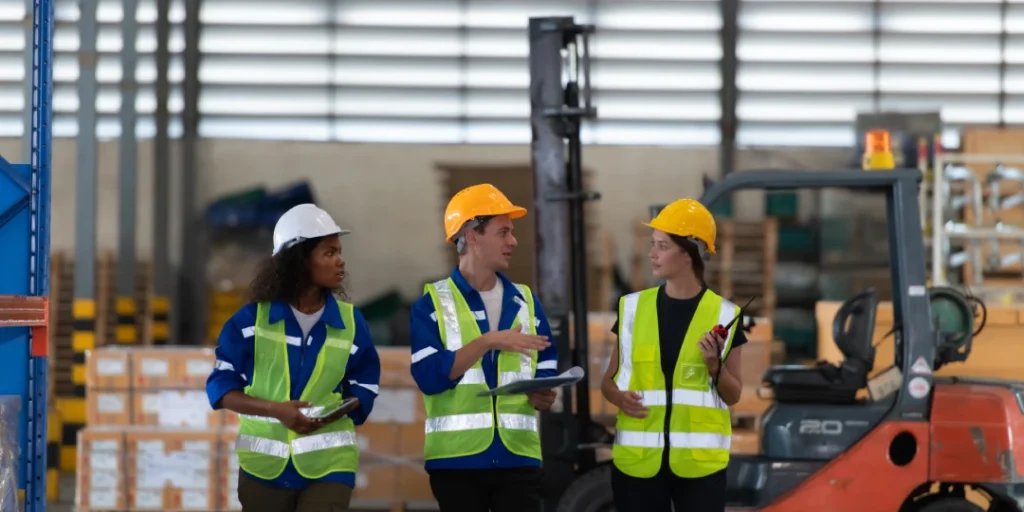Introduction: The Hidden Danger in Dust
Silica dust is often overlooked on job sites, not because it’s rare, but because it hides in plain sight. Its particles are microscopic—at least 100 times smaller than a grain of sand—yet they float freely in the air when materials like concrete, brick, or drywall are cut, crushed, or ground. For many construction workers, breathing in silica becomes part of the daily grind, unnoticed and unmonitored. The real threat is its cumulative effect. A single task might not raise alarms, but day after day, week after week, the body pays a steep price.
In Nashville, where construction is booming from East End to the Gulch, the risk from airborne silica has intensified. Job sites are densely packed and often operate on fast-paced timelines, creating an environment where dust control is either rushed or sidelined. Dry cutting tools are used without proper suppression. Protective masks are worn inconsistently. Ventilation systems struggle to keep up. With so many crews working in close quarters, even a single lapse in silica control can have widespread consequences. It’s not just about one worker—it’s about the entire site.
This is where Fortier Loss Control enters with clarity and conviction. Recognizing silica as a persistent and escalating hazard, the team is reorienting safety planning around prevention, not just compliance. Fortier isn’t waiting for a violation or an incident report. They’re modeling a proactive stance that includes real-time monitoring, specialized training, and engineering controls embedded into project workflows. The message is clear: silica exposure isn’t a footnote in safety conversations—it’s a headline issue, and Fortier is treating it as such.
Understanding Silica: What It Is and Why It Matters
Silica, in its crystalline form, is found in abundance in the natural world. It’s a primary component of materials like quartz, sand, granite, and even some soils. In construction, silica is practically unavoidable. It’s embedded in the very materials that make up buildings, sidewalks, and highways. But while it may be inert when undisturbed, the moment those materials are drilled, ground, or cut, silica transforms into a respirable threat. The resulting dust, invisible to the naked eye, can hang in the air for hours—ready to be inhaled by any unsuspecting worker nearby.
What makes silica especially insidious is its long-term impact on human health. Once inhaled, the fine particles can lodge deep into the lungs, triggering an inflammatory response that leads to the formation of scar tissue. This condition, known as silicosis, is progressive and irreversible. Even mild cases can cause chronic breathing difficulties, while more advanced cases can be fatal. Beyond silicosis, prolonged silica exposure has also been linked to lung cancer, chronic obstructive pulmonary disease (COPD), and even autoimmune conditions. These aren’t theoretical risks—they’re documented, medically recognized outcomes tied directly to silica inhalation.
The challenge is that silica doesn’t come with obvious warning signs. Workers may not feel ill right away. Symptoms often take years to surface, by which time the damage is permanent. This lag creates a dangerous illusion of safety—just because there’s no immediate reaction doesn’t mean the environment is safe. That’s why education and enforcement around silica hazards are critical. It’s not about reacting to illness; it’s about recognizing that every unprotected exposure is a step closer to long-term harm. Fortier’s work begins here—with clear understanding, rooted in science, reinforced by policy.
Regulatory Landscape: OSHA Standards and Local Enforcement
Silica safety isn’t just a best practice—it’s a legal requirement. The Occupational Safety and Health Administration (OSHA) established clear standards in 2016 through its Respirable Crystalline Silica Rule, setting a permissible exposure limit (PEL) of 50 micrograms per cubic meter of air over an 8-hour shift. In addition, the regulation calls for employers to measure worker exposure, limit access to high-exposure areas, use dust controls, and provide medical exams to high-risk employees. These rules apply to all industries, but enforcement is especially aggressive in construction, where silica exposure is pervasive and often underestimated.
Nashville, under the oversight of Tennessee OSHA (TOSHA), has started pushing harder on silica enforcement in response to the city’s aggressive construction trajectory. Inspectors have ramped up unannounced site visits, focusing not just on the presence of protective gear, but on real mitigation plans. Fines for noncompliance have climbed, and repeated violations now carry steeper consequences—including work stoppages or contract penalties. Local agencies are increasingly aligning with federal scrutiny, understanding that the pace of development cannot come at the cost of worker health. The message is simple: silica hazards are known, measurable, and must be actively controlled.
Fortier Loss Control treats these regulations as a floor, not a ceiling. Rather than simply aiming for compliance, their safety teams treat OSHA’s standards as a starting point for more rigorous internal protocols. They document silica exposure plans at the project proposal phase and follow through with on-site enforcement mechanisms that exceed regulatory baselines. For Fortier, the goal isn’t just to pass inspections—it’s to ensure that no worker’s health is compromised by something as preventable as airborne silica.

Nashville’s Construction Boom and Elevated Silica Risk
Nashville is building upward, outward, and fast. From luxury towers to infrastructure upgrades, the city’s skyline is evolving in real time. But this growth comes with side effects, and silica exposure is one of the least discussed but most pressing. With overlapping sites and multi-employer environments, dust control becomes complicated. A subcontractor using a dry saw on one floor can create airborne hazards for dozens of workers across an entire structure. The pace of the boom also means projects are often under pressure to cut corners, and silica controls—seen as secondary by some—are often sacrificed first.
Silica exposure risk rises exponentially on high-density job sites. Many Nashville crews work in tight indoor spaces with limited airflow, where ventilation is either temporary or ineffective. In outdoor settings, demolition and renovation activities kick up silica-laden dust that can drift far beyond the point of origin. What starts as a localized hazard becomes a site-wide concern. Add to that Nashville’s unpredictable weather—humid days that trap particles, windy days that spread them—and it becomes clear that silica is not just a task-level risk, but a project-wide challenge.
Fortier Loss Control recognizes that silica safety must be tailored to the city’s specific growth pattern. Their safety strategies are adapted to account for Nashville’s vertical construction trends, logistical congestion, and fluctuating weather. Rather than rely on static protocols, Fortier teams re-evaluate silica controls weekly, if not daily, using live site data. This situational awareness allows them to remain agile, even on the most compressed and fast-moving projects. In a city racing toward its future, Fortier is making sure health and safety aren’t left behind.
Fortier Loss Control: A Proactive Philosophy
Fortier’s approach to silica safety stands apart because it starts early. While many contractors wait until problems arise before addressing air quality, Fortier integrates silica planning into the preconstruction process. Their safety managers review drawings and material lists to flag high-risk tasks before ground is even broken. From there, they design control systems that are budgeted and scheduled alongside structural and mechanical scopes. Silica is treated as an operational variable—just like concrete mix ratios or crane logistics—not a compliance afterthought.
At the jobsite level, Fortier’s silica strategy is both tactical and cultural. Site supervisors are empowered to stop work if control systems aren’t in place, and they’re backed by upper management to make those calls without hesitation. Silica exposure isn’t minimized through luck or occasional diligence—it’s mitigated through deliberate, layered defenses. That includes engineering controls, real-time monitoring, dedicated cleanup crews, and worker feedback loops. Fortier isn’t waiting for OSHA to point out failures; they’re catching them internally through ongoing audit cycles and peer-to-peer review systems.
This proactive stance extends to how Fortier works with its clients. On complex builds, the company walks owners through their silica mitigation plan, showing how safety aligns with scheduling, productivity, and long-term cost savings. Fortier helps clients understand that silica control isn’t just about avoiding penalties—it’s about ensuring worker health, reducing liability, and sustaining project momentum. In this way, Fortier has redefined loss control: not as a reaction to risk, but as an embedded discipline that strengthens every facet of construction delivery.
Exposure Assessment: Measuring and Monitoring the Invisible
Silica is dangerous not just because of its health effects, but because of its invisibility. You can’t dodge what you can’t see. That’s why Fortier places a strong emphasis on exposure assessment as the first line of defense. Relying solely on visual inspection or generic job hazard analyses won’t cut it when respirable silica particles are involved. Fortier employs a mix of real-time monitoring technology and gravimetric sampling to track exposure levels and identify danger zones on active job sites. This layered approach ensures both immediate alerts and long-term data collection.
Real-time monitors are deployed during high-risk operations such as jackhammering, concrete cutting, or masonry grinding. These devices measure airborne silica concentrations on the spot and can trigger alarms when levels approach the permissible threshold. For Fortier crews, these aren’t theoretical alerts—they prompt immediate mitigation: wetting down materials, increasing ventilation, or suspending tasks temporarily. It transforms the abstract concept of “airborne danger” into something tangible and actionable. In parallel, Fortier conducts routine gravimetric sampling with specialized filters, analyzed off-site in accredited labs, to validate trends and refine their protective strategies.
What sets Fortier apart is how they integrate this data into site operations. Exposure trends are logged and visualized through digital dashboards accessible to both safety teams and site leadership. These dashboards help identify recurring high-exposure activities or crews, allowing Fortier to intervene early with tool modifications, training refreshers, or schedule changes. This level of transparency fosters accountability while empowering crews to understand their environment. Silica isn’t just a line item in a risk matrix—it becomes a tracked variable, managed with precision and urgency.

Engineering Controls on Fortier Sites
Controlling silica exposure requires more than personal protective equipment; it demands an environment that suppresses dust at its origin. Fortier prioritizes engineering controls as the primary line of defense, ensuring that silica doesn’t become airborne in the first place. Every high-exposure task is paired with mechanical systems designed to either trap or eliminate particles before they pose a risk. These aren’t optional add-ons—they’re written into the scope of work and enforced with the same rigor as structural or electrical systems.
Water-fed tools are a staple across Fortier’s sites, from saws and drills to core borers. These systems apply a continuous stream of water during operation, keeping silica particles from ever becoming airborne. In areas where wet cutting isn’t feasible, HEPA-filtered vacuum systems take over. Fortier pairs grinders and scarifiers with dust shrouds and vacuums rated for fine particulate capture, ensuring that silica doesn’t escape into the surrounding air. Larger jobs often incorporate temporary negative air machines and filtration systems, especially in enclosed or multi-level structures where particle migration can become widespread.
What’s notable is the consistency and discipline in how these controls are applied. Fortier doesn’t just issue a policy—they audit compliance continuously. Equipment is checked daily, filters are replaced on schedule, and crews receive hands-on instruction in proper setup and maintenance. If a subcontractor arrives with non-compliant tools, they’re turned away until the issue is corrected. By treating engineering controls as a non-negotiable standard, Fortier ensures that silica is addressed not just occasionally, but systematically—at every task, on every site.
Worker Training and Empowerment Strategies
Even the most advanced silica controls can falter if workers don’t understand why they matter—or how to use them correctly. Fortier recognizes that training is not just a legal requirement, but a cultural investment. They go beyond boilerplate safety talks by offering site-specific, multilingual, and interactive training sessions tailored to the work at hand. Rather than lecture from a slide deck, Fortier builds sessions around real tools, real tasks, and real scenarios workers will encounter. Silica safety becomes something relatable, not abstract.
Every worker on a Fortier site, from general laborers to foremen, receives targeted education on silica hazards before they begin high-exposure tasks. This includes understanding the health risks, identifying high-risk operations, operating engineering controls properly, and recognizing when exposure limits may be exceeded. Importantly, the training is delivered in the primary languages spoken by the workforce. Fortier also incorporates visual learning aids—like pictograms and workflow charts—around job sites to reinforce key concepts in a low-barrier way. It ensures retention, not just attendance.
Empowerment is where Fortier’s training philosophy shines. Workers are encouraged to speak up without fear of retaliation if they believe silica exposure is rising or controls are failing. Supervisors actively solicit feedback on the effectiveness of mitigation efforts, creating a feedback loop that improves both safety and trust. This isn’t just about meeting OSHA’s training clause—it’s about building a jobsite culture where every worker feels responsible for, and protected by, silica safety standards. At Fortier, knowledge isn’t reserved for management. It’s distributed, shared, and expected across every level of the crew.
Health Surveillance and Long-Term Risk Mitigation
Silica’s most severe effects don’t appear overnight. The diseases it causes—silicosis, lung cancer, and chronic respiratory disorders—often develop quietly over years of repeated exposure. That’s why long-term health surveillance is a cornerstone of Fortier’s silica safety program. The company recognizes that today’s safety isn’t just about preventing accidents now—it’s about safeguarding workers’ futures. Through targeted medical partnerships and voluntary testing programs, Fortier is addressing the slow, silent risks of prolonged silica exposure.
For workers in roles deemed higher risk—such as tile cutters, demolition crews, or concrete specialists—Fortier offers access to routine pulmonary testing and clinical screenings. These assessments are conducted in collaboration with occupational health clinics and include spirometry, X-rays, and silica-specific health reviews. Participation is encouraged through transparency and trust, not coercion. Workers are educated on what the tests entail, how results are handled, and what support is available if issues are detected. This approach demystifies the process and boosts engagement.
Fortier uses aggregated, anonymized health data to refine its silica control programs. If patterns emerge—such as reduced lung capacity among a certain crew type or spike in minor symptoms during summer months—safety teams investigate and adjust their controls. The goal is not just to meet legal requirements, but to respond dynamically to the lived health realities of workers. In doing so, Fortier reinforces that silica safety isn’t just a site concern—it’s a lifelong commitment to the people who build the city’s infrastructure.

Frequently Asked Questions
1. What makes silica dust so dangerous on construction sites?
Silica dust contains tiny crystalline particles released when materials like concrete, stone, or brick are cut or ground. These particles are respirable, meaning they’re small enough to penetrate deep into the lungs. Long-term exposure can cause severe health issues such as silicosis, lung cancer, and chronic respiratory diseases—even if symptoms don’t appear right away. Because silica dust is invisible to the naked eye, it often goes unnoticed without proper monitoring and controls.
2. How is Fortier Loss Control addressing silica exposure differently from other contractors?
Fortier integrates silica safety into the entire construction lifecycle—starting with preconstruction planning and continuing through live air monitoring, engineered dust control systems, and site-specific worker training. They also collaborate closely with subcontractors and vendors to ensure everyone on-site adheres to the same high standards. This proactive, data-driven approach helps prevent exposure instead of merely reacting to it.
3. What role do workers play in Fortier’s silica safety program?
Workers are central to Fortier’s silica strategy. They receive targeted, multilingual training specific to the jobsite and are empowered to report hazards without fear of backlash. Fortier encourages open communication and equips crews with the knowledge and tools to identify and manage silica risks in real time. This creates a jobsite culture where safety is shared, respected, and actively maintained.

Conclusion: Safety by Design, Not by Default
Silica doesn’t need to be a silent killer on Nashville’s job sites. Its dangers are known, its effects are preventable, and the tools to manage it are readily available—when leadership makes it a priority. Fortier Loss Control has chosen to treat silica safety not as a bureaucratic obligation but as a foundational element of how they build. Their approach is deliberate, integrated, and focused not only on today’s compliance but on tomorrow’s health outcomes.
By embedding silica mitigation into every stage of the construction process—from preconstruction planning to real-time monitoring and long-term medical surveillance—Fortier is modeling what true prevention looks like. They’ve shown that safety isn’t an obstacle to efficiency; in fact, it often enhances it. Crews that feel protected work more confidently. Schedules are more predictable when dust-related stoppages are minimized. Risk management isn’t just about avoiding fines—it’s about building trust and resilience into every layer of a project.
In a city as fast-changing and architecturally ambitious as Nashville, the stakes are high. But Fortier’s silica strategy offers a path forward—one where rapid development doesn’t come at the expense of human health. Through rigorous controls, worker empowerment, and a willingness to lead where others follow, Fortier Loss Control is not just responding to a problem. They’re setting a new standard—where safety is designed in from the ground up.



